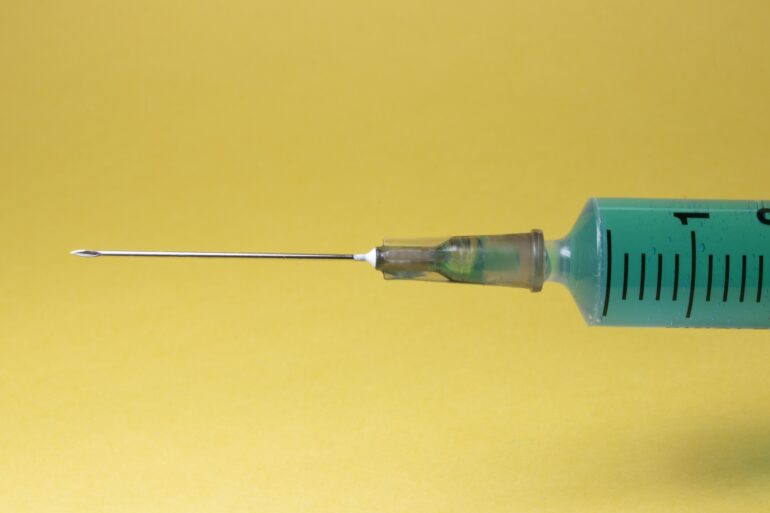TL;DR:
- Collaboration between PNNL and HMS utilizes AI to guide vaccine development.
- RAPTER project employs machine learning to analyze vast scientific literature.
- Aim is to identify optimal vaccine strategies, reducing time and cost.
- AI tools extract key data for informed decision-making.
- LANL-led consortium focuses on raw experimental data and AI pattern recognition.
- Researchers validate computational findings through experimental processes.
Main AI News:
In an era where natural language processing tools and generative artificial intelligence (AI) engines are finding applications in tasks ranging from everyday problem-solving to communication, the landscape of vaccine development is also experiencing a transformation. Leveraging cutting-edge technology, a collaborative endeavor between Pacific Northwest National Laboratory (PNNL) and Harvard Medical School (HMS) is shaping the future of vaccine research. Their initiative, known as the Rapid Assessment of Platform Technologies to Expedite Response (RAPTER), employs the prowess of machine learning and AI to navigate the vast realm of scientific literature. Its goal: to equip decision-makers with the insights needed to steer vaccine development in the right direction.
Traditionally, the journey to develop vaccines has been marked by its lengthiness and exorbitant costs, often spanning years and consuming substantial financial resources. Vaccines, employing different strategies or “platforms,” exhibit variations in generating immune responses. This is where RAPTER steps in, unraveling the optimal strategy for combating specific viruses or bacteria, ensuring the utmost efficacy in triggering immune responses. By accelerating the vaccine creation process, RAPTER aims to significantly curtail both time and expenditure.
Efficient Data Processing with the Aid of AI
The life of a scientist involves sharing research outcomes, enabling peers to glean insights from experiments conducted. However, the sheer volume of scientific literature can be overwhelming for any individual to thoroughly examine. Recognizing this, Neeraj Kumar, the lead researcher for RAPTER at PNNL, underscores the need for an automated approach. “RAPTER is designed to meticulously sift through the scientific literature, aggregating findings from diverse vaccine design experiments. Ultimately, it aspires to empower decision-makers with the necessary knowledge to pinpoint the most effective strategy in tackling future pandemics,” Kumar asserts.
The synergy between PNNL and HMS is instrumental in constructing a framework that extracts meaningful information from scientific publications. Benjamin Gyori, Director of Machine-Assisted Modeling and Analysis at HMS, elaborates on their mission: “Our contribution to RAPTER entails gleaning insights from both successful and unsuccessful vaccine design endeavors chronicled in the scientific literature. By harnessing the power of artificial intelligence, we are paving the way for robust decision-making tools in vaccine development.”
The Intricacies of Immunology and AI Convergence
While artificial intelligence tools have proven their worth in fields like small molecule design, the complexities of immunology and vaccine development pose unique challenges. Collaboratively, PNNL’s Jeremy Zucker and HMS scientists are fine-tuning existing tools to extract pivotal information from publications, deepening our comprehension of immune responses triggered by varying vaccine strategies.
The linchpin to this endeavor lies in elucidating the interconnections between immunity mechanisms and experimental observations. Once these vital terms are identified, the RAPTER tool orchestrates the linkage between terminologies across diverse scientific publications. This culminates in the creation of the Knowledge Extraction for Strategic Threat Response using Evidence from the Literature (KESTREL) database—a comprehensive repository of immune response relationships.
Predictive Insights for Informed Vaccine Strategies
Understanding the intricate tapestry of immune response relationships bears the potential to forecast the efficacy of distinct vaccine strategies. As Neeraj Kumar articulates, “By delving into these relationships, we can proactively ascertain the protective potential of various vaccine approaches. This invaluable knowledge enables scientists to channel their efforts toward strategies more likely to yield successful outcomes.”
Safeguarding Against Impending Threats
In an ever-evolving landscape threatened by phenomena like pandemics, the role of the Department of Defense’s Defense Threat Reduction Agency (DTRA) is pivotal. With a rich history of countering emergent threats through investments in science, technology, and capability development, the DTRA acknowledges the profound menace posed by pandemics, as underscored by the upheaval caused by COVID-19. To fortify our defenses against future pandemics, DTRA supports a consortium of leading research institutes, spearheaded by Los Alamos National Laboratory (LANL), in the development of the RAPTER tool.
Diverging from PNNL and HMS’s approach, LANL scientists are engaged in the meticulous collection and curation of raw experimental data pertaining to viruses and vaccines. Their integration of artificial intelligence aids in the identification of patterns within this data, fostering the creation of comprehensive profiles for potential vaccines. Collaboration extends to entities such as Lawrence Livermore National Laboratory, Sandia National Laboratories, and a consortium of prominent universities, all contributing to this transformative initiative.
The Path Forward: Merging Computation and Experimentation
As computational frameworks take shape, research institutes are poised to synergize their efforts, embarking on the journey of experimental validation. Pioneering this endeavor is a team of researchers, including Zachary Stromberg, a biomedical scientist from PNNL. Their focus rests on substantiating the computational findings, particularly in the realm of mRNA-based vaccines—a platform already harnessed in combatting SARS-CoV-2.
In unison, these collective efforts forge an automated pipeline poised to expedite the landscape of vaccine design. “Together,” asserts Kumar, “we are poised to revolutionize the pace and precision of scientists’ endeavors in vaccine development, ensuring a safer and more secure future for all.“
Conclusion:
Incorporating advanced AI techniques into vaccine development, as demonstrated by the collaboration between PNNL, HMS, and LANL-led consortium, is poised to reshape the landscape. Through efficient data processing and predictive insights, this integration expedites vaccine creation and enhances the efficacy of strategies. This innovation not only safeguards against future threats but also underscores the potential of AI to revolutionize the market by streamlining research, expediting results, and addressing critical challenges efficiently.

